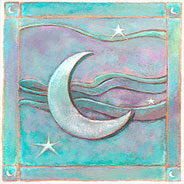 “This way or no way
“This way or no way
You know, I’ll be free
Just like that bluebird
Now ain’t that just like me”
~ David Bowie, from “Lazarus”
Astrologers always find it interesting to look at the charts of extraordinary people, and David Bowie’s chart is, unsurprisingly, quite remarkable. Most people repress at least some of the promises inherent in their charts, and it is always refreshing to see someone living — and dying — in a way that is fully engaged with their soul’s blueprint for this lifetime. I decided to write this post because Bowie did just that, and I hope it will be of interest to both astrologers and fans.
(I’ll put the more abstruse technical details in parentheses and italics so they can be easily skipped. Astrologers can find the chart here.)
I believe a person’s chart gives the blueprint of not only this lifetime, but insights into other incarnations that are tied to this one by the goals and desires of the soul/spirit/oversoul (whatever you choose to call that eternal part of us that takes on multiple incarnations). Some of those goals and desires take multiple lifetimes to fulfill. Your mileage may vary, but this is the perspective I’ll be taking in this interpretation. And, no, I don’t believe the life is entirely mapped out in the chart. It’s only an itinerary, and we get plenty of free will — but we don’t always claim our power to use it well.
(Astrologers who do look at reincarnational issues generally look at the Moon’s nodal axis, at Saturn, Moon, and Pluto and at the Water Houses — the fourth, eighth and twelfth as indicators of past lives.)
“Mortality wasn’t something David discussed, but he sang about it a lot. I think he saw the pain and felt the suffering in life more than most. Many of us put up filters and go into denial. I don’t think he ever did that, and that came out in his music.”
Mike Garson interview in The Guardian
Unfiltered truth about reality is Saturn’s trademark, and for all Bowie’s emphasis on Uranian freedom and self-expression, Saturn rules this chart with its iron hand. (Astrologers: it co-rules the Ascendant, disposits 2 planets and is in mutual reception with Sun, and is strongly placed and aspected)
Without Saturn’s steadying influence and emphasis on discipline and hard work, all of Bowie’s brilliant artistry would have gone nowhere — he’d have been trapped in his head. His Capricorn Sun, Mars, and Mercury gave him tremendous physical energy and mental strength as well as a grounding on the Earth plane that kept him creating and performing even when his art had shot him far out into space.
He had Aquarius rising, and Bowie was seen as the quintessential Aquarian — a bleeding-edge iconoclast who flouted convention and challenged societal taboos. (His song “Changes” could be a theme song for Aquarius’ co-ruler, Uranus). But the chart indicates that there was a part of him that kept close track of social mores and public opinion, and welcomed at least some rules and organization. The raw strength and ambition inherent in this chart can hardly be overstated.
(Note that Uranus, in communicative Gemini, makes no Ptolemaic aspects, indicating that it tends to run wild in the chart, and is quindecile [165 degree aspect] both Venus, the ruler of artistic expression, and the MC indicating an almost obsessive need to be “free to be me”, which is exacerbated by a Leo Moon. [Some of you will see a Yod aspect pattern here with Uranus at the point. I keep my orbs very tight, too tight for the Yod, but in this case I’d consider loosening the orbs a bit. It certainly fits.] But he has three personal planets in Capricorn and the Sun is very powerful, in mutual reception with Saturn, and conjunct Mars, itself exalted in Capricorn. )
Unfiltered truth is also what Sagittarius and its ruler, Jupiter, seek. Sagittarius is the sign on his Midheaven (MC), the indicator of a person’s public presentation and career. Venus, the planet of art, especially singing, is also in Sagittarius, right on the MC and in a flowing aspect to both Moon and Saturn.. The glittery, “look at me” flashiness of his Leo Moon notwithstanding, his art had to reflect Truth (always with the capital T), and a larger vision of the world that drew on a depth of understanding rooted in the collective unconscious.
(Astrologers will also note that Jupiter not only rules the MC and disposits Venus, it is strong in its own 9th house, and, like Uranus, it makes no Ptolemaic aspects [as I said, I keep my orbs tight]. In Scorpio, disposited by [essentially “working for”] both Mars and Pluto, Jupiter guides and directs his artistic self-expression in a visionary direction.)
He was deeply tied into the collective unconscious, channeling it through artistic expression, particularly acting. He took on roles (Ziggy Stardust, Thin White Duke, etc) even as a musician, and, of course, acted in a number of films. He kept a part of himself private — very private, especially his family life — but he gave freely of himself to his audience. His role-playing would have been, in part, an effort to keep his inner self at least somewhat shielded from the public eye, but was also probably part of his search for a Truth that could not be expressed through only one character.
(Astrologers note the extreme Southern Hemisphere emphasis, with nine planets above the horizon, Moon exactly on the Descendant conjunct Saturn and Pluto, all in artistic, self-expressive Leo in the seventh house. The twelfth house Sun-Mars conjunction suggests the need for privacy, along with the placement of Ascendant-ruler Uranus in the fourth house with the North Node.)
His chart indicates a generosity of spirit that expanded as he aged and came to a deeper understanding of and ability to cope with his own pain and that of others. He almost certainly did, as Mr. Gerson suggested above, have an exquisite awareness of life’s pain and suffering. Those who are Saturn-ruled almost always do, and the lack of emphasis on Water in his chart only made it more difficult for him to process and express some of his deepest emotional realities.
But the karmic keys in this chart are what I find particularly fascinating. The conjunction of three karmic planets on the Descendant and in Leo is an extraordinary knot of creative power rooted in past lives. Saturn’s involvement, ruling as it does both Sun and Ascendant, puts almost the entire chart in service to his creative side.
And yet, the creative road was a relatively easy one for him to follow. The chart indicates that he had done art before. He had even done fame and social prominence before (South Node in Sagittarius in the tenth house conjunct Venus and the MC. ). Creating came naturally to him, and had probably been a big part of several past lifetimes.
The more difficult lesson he chose to focus on this time around was to find and live from the core Self, that inner certainty of personal identity. Another part of that lesson revolved around having — and needing — roots. His spiritual discoveries would be made particularly through unusual but close family and tribal connections, not so much through his artistic expression, satisfying though that may have been for him on many levels. He had deep spiritual work to do this time around, and he did it mostly in private.
(The North Node and Ascendant ruler Uranus in the fourth. Twelfth house Sun-Mars and Mercury [it’s so close to the cusp I give it to the twelfth]. Mercury rules the NN, Uranus and the fourth house)
Fame, puts you there where things are hollow
Fame
Fame, it’s not your brain, it’s just the flame
That burns your change to keep you insane
Fame
~ David Bowie, from “Fame”
He was aided in his spiritual search as well as his creative escapades by Mercury, as well as Sun and Mars, in a challenging relationship with Neptune. This indicates a tremendous imagination, strengthens his spiritual interests, and connects him to the collective unconscious. Here is where those hard-to-express emotional realities often played out — in the realm of the mind and fantasy, including an interest in the occult and spirituality.
This aspect also points to his addictions and drug use. He needed an escape valve from the emotional pressures so strongly indicated in this chart, that were exacerbated by his fame. It’s clear from his work as well as his chart that he had an insatiable curiosity about the human mind and its limits. He was a psychonaut, a sailor of the soul.
Eventually, as he matured (Capricorns almost always improve with age) he was able to let go of the drugs and addictions. Those three planets in Capricorn and their strong ruler helped him stay anchored and sane. Tough aspects between Mercury and Neptune can signify mental health problems, and while he may have worried about his sanity sometimes (Capricorn loves to worry), he stayed firmly tethered to the mothership. Most Capricorns have a head for business, and Bowie was no exception. Though his artistic pursuits always took precedence, he learned from his business mistakes and ended up a wealthy man who, unlike many artists, regained and then retained control over his oeuvre.
I believe that we all come into any given incarnation with at least some co-creative agreements with others, those with whom we intend to interact in this lifetime to see what we can create together. Life is, after all, nothing if not creative. Those who become famous agree to carry the dreams of many, while they work within the challenges and blessings of fame for their own growth.
One of fame’s major challenges is dealing with the psychic projections of millions of people. I’m convinced this is why celebrities often have such profound substance abuse and relationship problems. Bowie seems to have dealt with this, at least partially, through creating the various characters he played, both as a musician and an actor — though he discovered that taking on these created identities could be dangerous as well.
From an interview with Joe Smith:
David Bowie: …So I found it quite easy to write for the artists I would create, because I did find it much easier having created a Ziggy, to then write for him. Even though it was me doing it. I was able to sort of distance myself from the whole… yeah, well it can become very complicated.
Joe Smith: There is a psychological name for that.
David Bowie: Yes. It is. Fucking with the fabric of time there. It did bring a whole sackful of its own inherent problems with it.
I find it interesting that one of his favorite occult books was Dion Fortune’s “Psychic Self-Defense”. I would not be at all surprised to find that some of the techniques in there — not to mention her warnings about drugs — helped him get free of the cocaine, because he would have learned to protect himself from the destabilizing influence of the projections of millions of strangers.
What struck me about the pictures I have seen of him in the last decade of his life, including the ones taken just days before his death, is that they show a remarkable combination of joie de vivre, contentment, and kindness in his expressions. David Bowie, for all that his passing may have seemed untimely to those of us left here on Earth, appears to have lived a full, rich life that made the best of the opportunities inherent in his chart. I like to think that he is looking back on it with the satisfaction of a job well done, in knowledge of the spirit eternal, in peace, and freedom, and reunion with those who have gone before. Blessed be, David.


